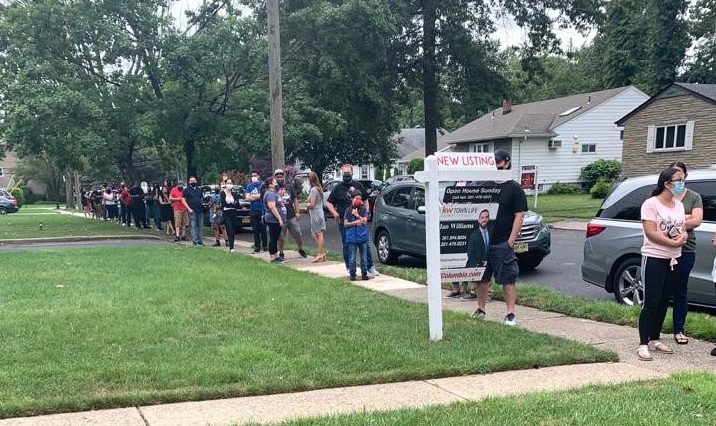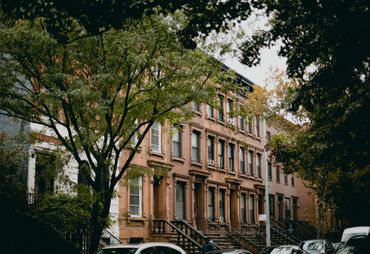We’ve heard the news stories and read the articles: New York City is experiencing a great migration. Many of those who previously called NYC home are trading in their high rises for the lawns and picket fences of the suburbs, as Manhattan vacancy rates continue to climb. Let’s dive deeper into why exactly people are leaving and what that looks like for the future NY Tri-State area real estate market.
Why Are People Leaving NYC?
The reasons why people decide to leave New York City ultimately come down to individual and personal situations, but based on information our brokers and agents have been hearing from customers and colleagues, this growing exodus centers around three main reasons:
- Uncertainty around COVID-19
The coronavirus hit New York City hard – much harder than other parts of the country. The pandemic brought the city to a virtual stand still back in March and April, and many facets of city life still aren’t fully back to normal (and won’t be for some time). New York, the gateway to the country and home to millions of citizens and thousands of healthcare and other essential workers, became the first mega hot spot in the US for coronavirus cases. The local hospitals’ inability to handle the surge of sick patients led to high death rates and left some residents feeling panicked.In high-density metropolises such as New York City, it’s also much more difficult for people to socially distance than in other parts of the country. While the state and city acted swiftly in the face of the surge and did indeed ‘flatten the infection curve’ by quickly implementing shelter in place and mask protocols, some residents — particularly those with the means to explore alternatives — began to look at their options. With limited outdoor activities and a shut-down city, New Yorkers and their families were confined to their apartments for months.Though the city has begun to reopen since mid-June, the uncertainty surrounding the control of the virus and potential flare ups, sent New Yorkers packing – or at a minimum, to real estate websites – with no plans to return. - Social and workplace upheaval
New Yorkers are proud that their city is home to 8 million people of diverse backgrounds — individuals who own their identity, speak their mind, and make NYC like nowhere else in the world — but it’s not without the issues and concerns of other larger cities in the US. Earlier this year, in the wake of the death of George Floyd and broader social justice concerns, the city has experienced public demonstrations and protests. Unfortunately, property crime has also seen a spike.Additionally, multiple New York City employers have implemented and extended their work from home policies, impacting individual decisions about where to live. In a period of uncertainty and change, people consider their options, and this too has prompted interest in alternatives to living beyond the five boroughs. - Low interest rates
Even though home prices in much of the country continue to increase, due to low inventory and an uptick in home buyer volume, interest rates on mortgage loans are at historic lows. This, coupled with the other factors listed above, has lured New Yorkers out of their apartments and into the suburbs, many looking for their first home purchases. However, buyers beware: due to low inventory (20-30% lower than year over year averages), the Tri-State real estate market is uber competitive. This is great news for sellers, as many homes are selling way over asking price as soon as they hit the market.A long line of people wait at an Open House in New Jersey in July 2020
In this fierce market, buyers – especially first-time home buyers – will want to work with an experienced real estate agent or broker. Navigating this complex market without one could cost you your dream home (and your sanity!)
Who is Leaving?
Families
Families with younger children make up a large percentage of those who are moving out of NYC. First-time homebuyers are moving outward to areas of Northern New Jersey, Westchester County, Long Island, and Connecticut in search of more space for themselves and their children. The ‘new normal’ of working and schooling remotely has put a strain on families who live in the city and lack available space to live, work, and teach at home.
Younger Generations
Younger generations have also been leaving; a wave of young professionals have recently retreated from the city, many returning back home to live with parents while working remotely. Many other young people who have lost their jobs due to working in an industry affected by the pandemic have left to find cheaper housing options and better opportunities.
On the flip side, due to higher landlord incentives and lower rent prices, some Gen Z and Millennials are starting to move into the city from elsewhere, ready to make their NYC dreams a reality and be part of the comeback.
Older Individuals/Retirees
Older, financially stable individuals without children or empty nesters are moving out of the city to popular destinations often associated with vacation travel. Instead of juggling two homes, these buyers may consolidate their expense and update a part-time rental or vacation home to a full-time purchase. Cape Cod, Long Island, the Jersey Shore, and Florida have all seen an uptick in former New Yorkers who are looking to either a. purchase a new property or b. become permanent residents in a vacation home/second property their already own.
Businesses
It’s not just people who are relocating — businesses are as well. Following the lead of their employees, corporations and investment firms are choosing to relocate their offices to suburban cities such as Greenwich, CT. Cheaper rents and uneasiness around the use of public transit during the pandemic are two of the driving factors for companies moving into more suburban areas.
The influx of available office and retail space in Manhattan isn’t only due to corporate moves. According to new data, up to one-third of New York’s small businesses may have to shutter their doors due to the virus and prolonged delay in the return of foot traffic and daily commercial life in the city, while larger retail chains, already impacted by other competitive trends, are closing stores to control costs or exit the economy altogether.
What Does This Mean for the Local Real Estate Market?
There’s no way to accurately predict the long-term status of the New York Tri-State real estate market, but here are some recent trends that experts say are likely to continue for the foreseeable future.
New York City
Apartment vacancies in New York City continue to rise, with more than 67,300 units available in July 2020 across the city, according to StreetEasy. This is the greatest number of available apartments (the majority of which are in Manhattan) in any month since StreetEasy’s inception in 2010. While rents remained steady throughout the spring, they have now begun to drop, on an average of 10% compared to July 2019. Station Cities agents are seeing similar trends; landlords have been much more willing to negotiate with renters in recent months, and those who are still hedging on dropping rental prices are offering attractive incentives.
These lower-than-average rents and high vacancies may lead to an influx of a new population moving into New York: those who previously couldn’t afford it. There is some indication that artists, young professionals, and those who are trying to “make it” in the big city are slowly moving in, taking advantage of an opportunistic rental market.
Even though New York City has the virus more under control, as long as coronavirus-related uncertainty lasts, economists expect vacancies to rise and rental prices to drop, particularly in higher-priced properties. These market conditions are expected to persist – at minimum through the winter 2021 – in light of second wave infection concerns. Still, don’t bet against NYC in the long run – it will eventually bounce back, just as it always has.
Surrounding Suburbs (Northern New Jersey, Long Island, Upstate New York, Connecticut)
The suburban housing market across the country has been booming as of late, with home prices ticking upwards amid lower interest rates. In New Jersey, our agents have noted that intense bidding wars have become the norm, with some properties going for as much as $100,000 over the asking price. In June 2020, the median sales price in this market increased by 5.3% year over year. These trends have been seen in other Tri-State areas as well, such as Westchester County and areas of Southern Connecticut, as people demand more separated floor plans and bigger yard space for lifestyles impacted by the pandemic.
Freddie Mac, Fannie Mae, and the Mortgage Bankers Association all predict that average interest rates will remain low (around 3.1%) until the second quarter of 2021. Other experts warn that the housing market has a false sense of confidence. With the virus still not under control and key federal funding policies wavering or running out without renewals, the economic recession is likely to worsen in the short run, with the real estate market in its path. While inventory has remained low, with layoffs and unemployment numbers taking their toll, people could soon start to sell their homes out of necessity – especially those living in states or cities with high taxes. It’s also still too early to tell what impacts a Biden administration will have on the housing market.
Without knowing for sure when or how this global pandemic will end, there is no real certainty to predicting the future, but then again, there never really is. People will continue to do what is best for their own personal, family, and financial situations, whether it means staying in the city, moving to the suburbs, or riding out the storm by ‘sheltering in place.’
The good news? Whether you’re looking to buy, sell, or rent, Station Cities and our team of experts can help with your Tri-State area move.
Be sure to check out our webcast with our Tri-State managing brokers, discussing the current state of the housing market during the COVID pandemic (July 2020):





 Sign up today to get access to 1000's of homes we have available!
Sign up today to get access to 1000's of homes we have available!